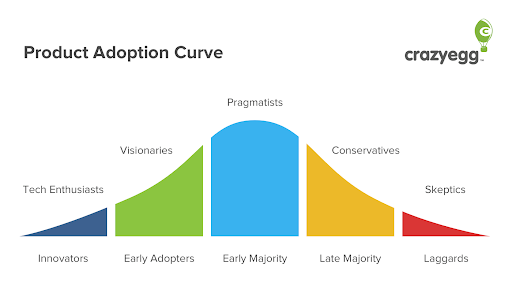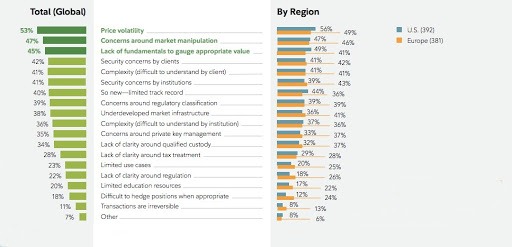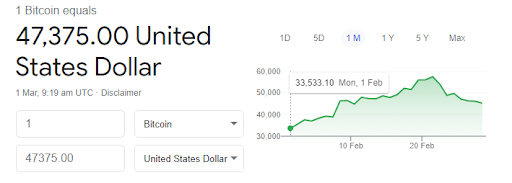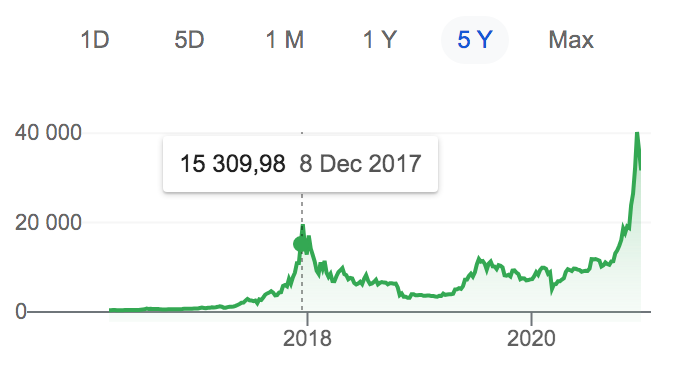Yet, the space is still in transition, with many residual features designed for tech-aware retail investors rather than funds, pensions, sovereign wealth funds and HNWIs. How does our provision need to change to support these new participants whose investment flows are already revolutionizing the space?
The great transition
Products and even platforms are typically adopted in a similar way. First come the enthusiasts, the true believers: inspired by the possibilities of the product, they adopt it despite its poor current performance. If you know someone who had a digital personal organizer in the 1980s, you’ve met one of these folks.
Later come the pragmatists — those who don’t really care about the product one way or the other but adopt it because it’s easier to get one than go without. Remember how smart phones were a niche thing, then suddenly everyone had one? That’s the tail-end of the adoption curve, when even people initially skeptical, conservative or even outright hostile to the product winds up getting one anyway.

Initially, the average digital asset investor was a user rather than a buyer: attracted by the technology or the idea of a decentralized medium of exchange, these were the enthusiasts who foresaw a future of buying pizza with Bitcoin. The transition to a situation where 2% of US citizens had invested, with 26% saying they planned to, took less than a decade from the publication of the original Satoshi white paper.
However, this replaced a small number of technology-focused retail investors with a much larger number of profit-motivated retail investors. Individual investments were still very small.
The really significant transition came with the inflow of institutional investment into the space after 2017. By 2018, Grayscale could announce that over half (56%) of its investors were institutional. By 2019, 22% of institutional investors had some exposure to digital assets. And the trend is ongoing, as well as clear: in June this year, Business Wire reported that 80% of institutional investors saw something appealing in digital assets, and 36% were currently invested.
While 40% saw them as alternative assets, and 20% as an independent asset class, the appeal went beyond a market that has outperformed even the booming US stock market; digital assets were seen as uniquely appealing thanks to high liquidity, low transportation and storage costs, and unique return drivers thanks to a growing economy in digital asset transactions.
The market for institutional investors in digital assets is growing, yet these investors have traditionally avoided the space; why are they moving now?
To understand that, we need to look at why such investors traditionally avoided the space.
Institutional investors and the Wild West period of digital assets
Digital assets began as a way to bypass regulations. For many, from Satoshi to Dan Larimer, the goal was a totally unregulatable currency over which the individual had total control. Unsurprisingly, this type of currency was sometimes used for illicit purchases and was also a target for theft by social engineering and hacking. Individual storage was attacked, and centralized digital asset exchanges, a chronic weak point in the ecosystem’s cryptographic defenses, were hacked; in 2019, South Korea’s BitThumb hacksaw thieves take $31 million in digital assets.
Combined with skepticism and a lack of knowledge about how digital assets work and generate returns, this helped to deter many institutional investors. Finally, the lack of regulation in the space and the absence of solutions to accommodate large investment flows contributed significantly.
Regulation, technology, infrastructure, and experience
Regulation has moved significantly since 2017. US regulators have established the purview of the SEC over securities in token form, and the OCC recently announced that US chartered banks could offer both fiduciary and non-fiduciary custody of 1:1 fiat-backed stablecoins. In Hong Kong, regulation friendly to digital assets combines with a low tax burden and strong financial regulations to create a financialized digital asset sector with institutional experience, ready to assist larger investors. And the technology to support institutional investors is coming into being. Tools like the Ledger Vault offer more security and flexibility than consumer-oriented options, and are replacing the redundant and flawed hot/cold wallet storage system.
What’s next?
What do institutional investors want to see change before they increase their exposure to the digital assets space, or enter it if they haven’t already?
Voices from within the industry aren’t always correct about what institutional investors want — or they sometimes miss nuances. For example, the digital asset space was long thought to be underregulated for institutional investors; 10% of US investors and 25% of European investors see low regulation and lack of government interference in the space as a positive. Lack of custody options, unclear regulation, and concerns around private key management do remain concerns for institutional investors, suggesting that more needs to be done in these areas:

The key areas of concern for most investors are market volatility, market manipulation and lack of fundamentals to judge value.
Market volatility
There isn’t much that we can do about market volatility beyond addressing it and assuaging some investors’ excessive concerns. The market in digital assets is volatile, and newer or lower-value digital assets are strongly subject to sharp price changes. Moreover, short-term fluctuations can be much sharper than in other asset classes, in part because digital assets permit instant transactions.
However, longer-term trends are hard to miss. At the time of writing the first draft of this post, Bitcoin pricing looked like this:

That five-day chart looks a little jagged. But as I polish up the second draft, in late February 2021, BTC pricing looks like this:

It’s more than doubled in the last two months alone. If you’d bought a single BTC at the end of November 2020, with prices at an all-time high (at the time), you’d have made $39,000 during the February 2021 all-time high..
The overall trend in the price of Bitcoin is clear.

An investor who had bought Bitcoins at almost any time in the past would now be in profit. Addressing this concern amongst investors is a matter of education.
Market manipulation
A key concern for just under half (46%) of the institutional investors questioned by Fidelity, market manipulation is endemic in the digital assets market. A study conducted this year by Ilan Sterk, the VP of Trading & Capital Markets at Orbs Group and VP Trading & Business Development at Alef Bit Technologies, found that there are in fact
“players in the crypto markets who purposely impact the price in order to make money from this action”.
Specifically, traders who hold large amounts of BTC may be inflating the price;
“the Bitcoin price is manipulated by sophisticated traders who use several exchanges (regulated and unregulated) in parallel to impact the Bitcoin price by buying or selling huge amounts of Bitcoin in the spot market”, explains Sterk.
The degree to which we as finance professionals can meaningfully offer protection against this is moot since even regulation has had little effect and the perpetrators act across multiple platforms. But we can advise clients and help them avoid the risks, such as avoiding large trades on low-liquidity platforms — a common red flag for price manipulation.
Lack of fundamentals
Investors cite lack of fundamentals as an obstacle to greater exposure to the digital assets space. Fundamentals such as understanding of the mechanisms of value and trading, and insights into the health and growth of digital assets and networks, impede institutional investment. For traditional financial assets such as stocks, fundamental analysis involves evaluating the financial health of a company based on its financial statements. There’s a large, reliable data set, so fundamental analysis has become a relatively straightforward process and investors expect access to accurate analyses.
Many new digital asset projects don’t have any earnings, revenues, profits, or other traditional metrics: a traditional financial fundamentals evaluation would rate these projects at zero, yet many go on to generate large revenues. Digital assets fundamentals analysis must clearly be approached from a different perspective, one reliant on a technical understanding of token or coin and project structure and on “lookalike” analyses.
The finance industry is solving this issue one professional, client and asset at a time; an increasing number of financial businesses are able to offer sophisticated analysis of individual assets but because of the underlying cryptographic structure this must be done on an asset-by-asset basis.
Market volatility
As distinct from deliberate attempts to affect prices, market volatility is a feature of the digital assets space in which assets gain value rapidly and can be traded instantly. We have seen that Bitcoin, the flagship asset in this class, has gained value in the long term despite chronic price volatility; yet JP Morgan’s February Perspectives report found that, although price volatility was declining it was still five times higher than in traditional assets.
This volatility deters some institutional investors who are more concerned with predictability than with the chance to make rapid gains. However, as the Coronavirus pandemic and underlying trends conspire to increase the price volatility of traditional assets and a growing ownership base and price discovery bring down the volatility of digital assets, this concern may drive decision-making less in the future.
Conclusion
Institutional investors are still chary of the digital assets space, but they are entering in increasing numbers as previous barriers fall. Regulation and professionalization of the space has helped, as has the long-term growth in the price of BTC and the emergence of a real digital asset economy.
Institutional investors are primarily concerned with financial matters, but to manage these, finance businesses will need to bring both traditional financial acumen and an understanding of the technical and practical aspects of the digital assets space.
